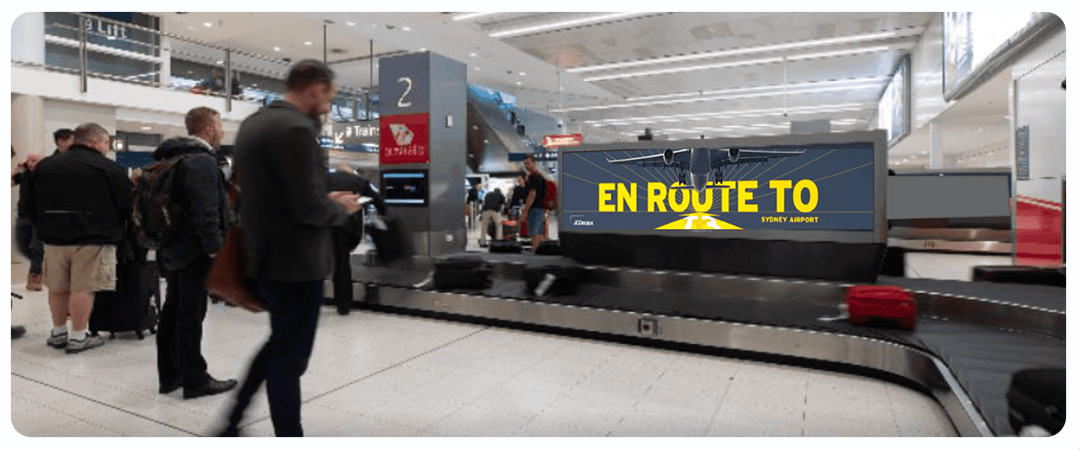
Australia, a vibrant hub for international business and luxury travel, presents a unique landscape for Out-of-Home (OOH) advertising. For marketers aiming to connect with influential business leaders, savvy investors, and affluent global travelers, Australian airports offer unparalleled opportunities. These environments are not just transit points; they are high-dwell-time zones where a premium audience is receptive. As an expert in Airport and Transit OOH media planning, let me guide you through crafting an effective airport advertising Australia strategy.
Understanding the unique flow and mindset of passengers within major Australian hubs like Sydney Airport advertising zones or Melbourne Airport advertising precincts is crucial. These aren't just locations; they are dynamic ecosystems where strategic placement can yield significant brand impact. The goal is to move beyond simple visibility and achieve meaningful engagement with a discerning audience.
Why Australian Airports are Prime Territory
Major Australian airports serve as critical gateways, processing millions of domestic and international passengers annually. A significant portion of this traffic comprises the very demographic marketers covet: decision-makers, high-net-worth individuals, and frequent premium flyers. Data consistently shows high recall rates for airport advertising, particularly among business travelers who often have higher dwell times in specific zones like lounges and premium check-in areas. Leveraging airport media Australia allows brands to align themselves with the prestige and global connectivity these environments represent. The key lies in pinpointing the most effective touchpoints within these vast spaces.
Pinpointing the Top 10 High-Impact Airport OOH Locations
Reaching a premium audience requires precision. Based on passenger flow analysis, demographic concentrations, and dwell time potential, here are the top strategic locations across Australia's leading airports:
- Sydney Airport (SYD) T1 International Departures - Premium Check-in & Security: High concentration of business and first-class travelers with significant pre-flight dwell time. Large format digital screens here offer high impact.
- Sydney Airport (SYD) T1 International Departures - Luxury Retail Precinct: Post-security, this area attracts affluent travelers with time to browse and shop. Digital networks and high-quality static placements work well.
- Melbourne Airport (MEL) T2 International Departures - Main Concourse & Lounge Entries: A major thoroughfare for all international passengers, with specific focus points near airline lounge entrances capturing the premium segment.
- Melbourne Airport (MEL) T2 International Arrivals - Baggage Claim: A high-dwell time location where all arriving international passengers, including returning business leaders and tourists, are a captive audience. Large static formats or digital networks are effective.
- Brisbane Airport (BNE) International Terminal - Departures Concourse: As a key hub for Queensland and international connections, the main departure area before gate access offers broad reach with opportunities near premium check-in. Consider exploring Brisbane airport advertising options here.
- Brisbane Airport (BNE) International Arrivals - Customs Exit & Greeting Area: The first point of welcome or return, capturing passengers as they transition landside.
- Perth Airport (PER) T1 International Departures: Serving the resource-rich West Coast, this terminal sees significant business travel. Focus on areas post-security and near gates for long-haul flights.
- Sydney Airport (SYD) T2/T3 Domestic - Business Lounges (Exterior/Entrance): Targeting domestic business travelers on key routes (e.g., SYD-MEL, SYD-BNE). Placements near lounge entrances capture this specific audience.
- Melbourne Airport (MEL) Domestic Terminals - High-Traffic Gate Areas: Focus on gates serving primary business routes, where frequent flyers congregate before boarding.
- Key Airport Business Lounges (Internal - where permitted): Direct access within Qantas, Virgin Australia, and international airline lounges offers unparalleled targeting, though inventory is exclusive and limited.
Leveraging Digital and Static Formats
The choice between digital airport advertising Australia (DOOH) and static formats depends on the specific location and campaign goals. Large-format digital screens in departure halls offer unmissable impact and flexibility for dynamic content. Networks of smaller digital screens along walkways or near gates allow for sequential messaging and programmatic targeting capabilities. Programmatic DOOH is increasingly relevant, enabling data-led targeting based on flight information or audience demographics, adding another layer of precision.
Static OOH, such as high-quality lightboxes or tension fabric displays, remains highly effective in long-dwell areas like baggage claim or near lounges, offering constant visibility. Understanding the airport advertising cost Australia involves balancing format, location, and audience reach to maximize ROI.
Standing Out in a Premium Space
While airports offer a concentrated premium audience, popular locations can have significant advertising presence. Differentiation is key. Instead of focusing solely on the most crowded spots, consider high-quality placements in slightly less saturated, but still premium, zones like specific gate areas for key business destinations or premium arrivals pathways. Analyze the types of messaging prevalent and identify opportunities for unique creative approaches that resonate specifically with business leaders or affluent travelers, focusing on value, exclusivity, or innovation. Strategic placement in less cluttered environments can often yield higher impact and recall.
Planning an effective airport OOH campaign in Australia requires a nuanced understanding of passenger journeys and strategic location selection. By focusing on these high-value touchpoints within Australia's premier airports and choosing the right formats, marketers can successfully connect with and influence a highly sought-after audience.


